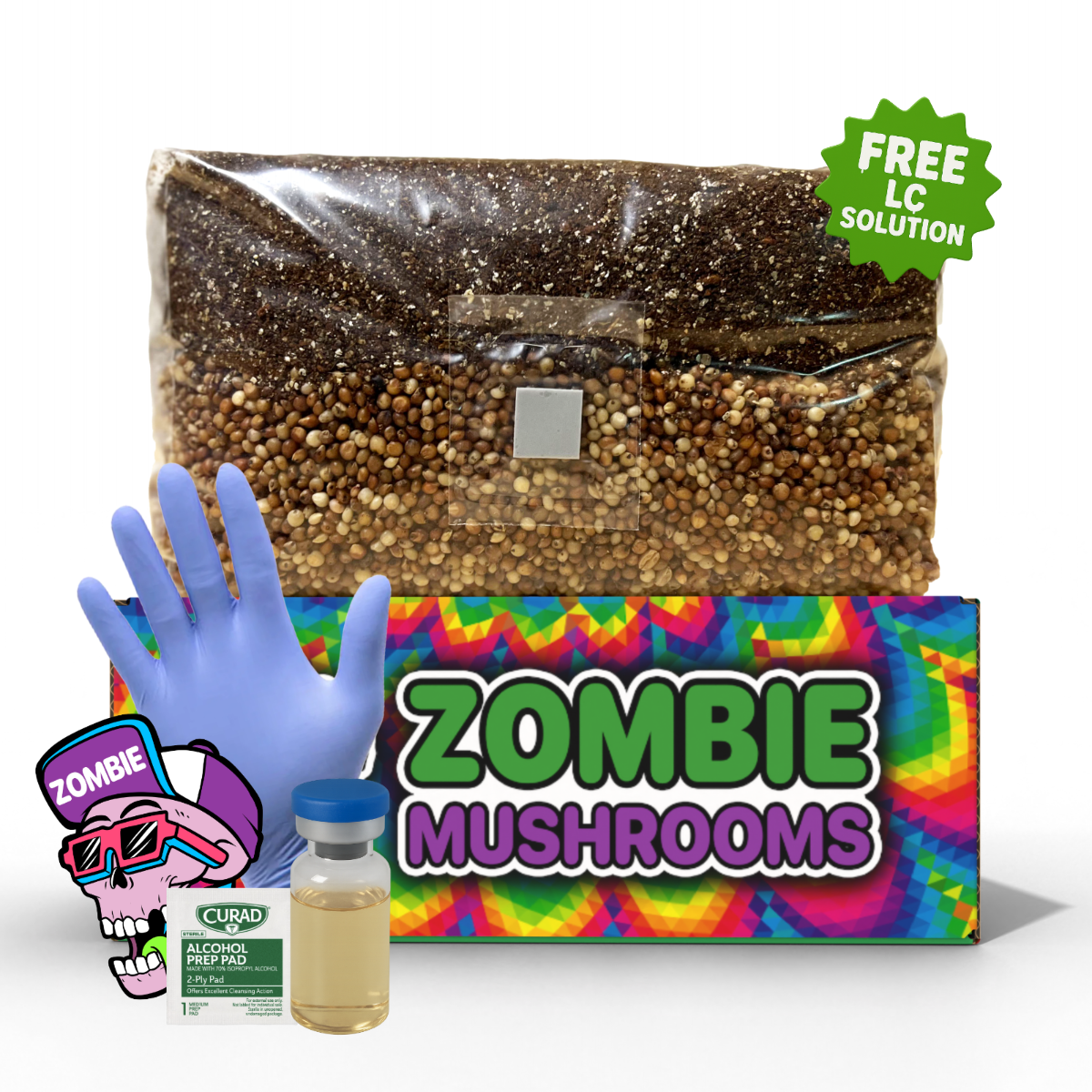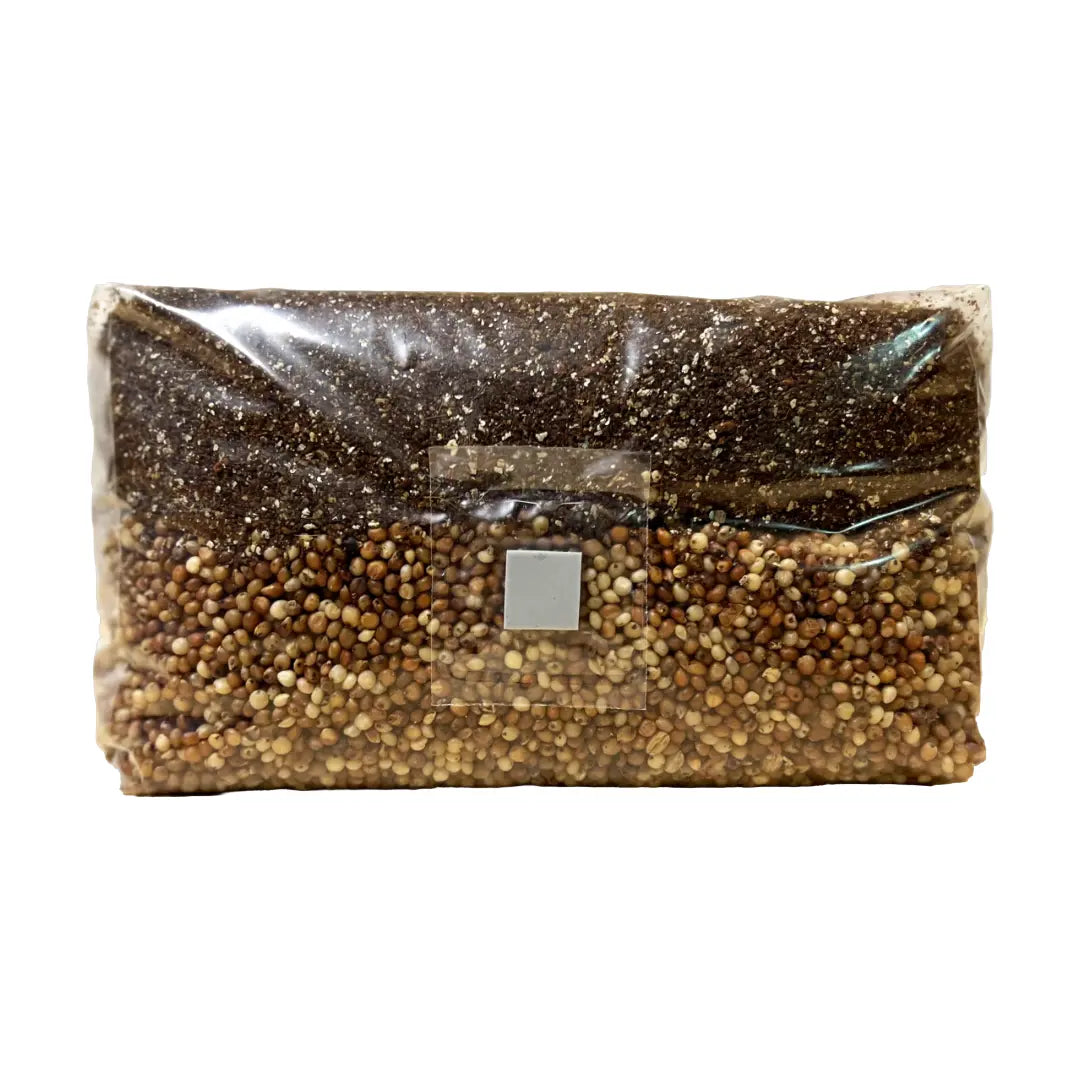⬇️ Prefer to listen instead? ⬇️

- Fewer than 200 kg of wild tiger milk mushroom are harvested yearly, making cultivation essential.
- β-glucan levels doubled using bioreactor cultivation in just 14 days.
- Clinical trials show significant lung function improvement with tiger milk mushroom.
- Enhances T-cells, B-cells, and NK cells, strengthening immune responses.
- Lab-grown lignosus rhinocerus can have higher bioactive levels than wild types.
What is Tiger Milk Mushroom and Why is it Special?
Tiger Milk Mushroom (Lignosus rhinocerus), also known as “Cendawan Susu Rimau,” is a prized medicinal fungus from Southeast Asian rainforests. Its sclerotia—dense underground tubers—are used traditionally to support respiratory health, immune function, and healing. If you’re interested in growing it yourself, using clean tools like mushroom grow bags or sterilized spawn can help you cultivate quality specimens with better consistency. This guide walks you through each growth stage, substrate recipe, care tips, and what science tells us about its benefits and possible risks.
But what truly distinguishes this mushroom is its underground growth habit. Unlike most culinary or medicinal mushrooms, Lignosus rhinocerus doesn’t form the traditional cap-and-stem structure sought in other fungi. Instead, the primary harvestable material is the underground sclerotium—a nutrient-dense, hardened mass of mycelium that stores the mushroom’s strong active compounds, making it highly valued by both traditional healers and modern cultivators who may use grain spawn bags to study and expand its growth.

Key Medicinal Components
The sclerotium has these main active compounds
- β-glucans (up to 35%): Immunomodulatory polysaccharides known to enhance both innate and adaptive immune responses.
- Triterpenes: Bioactive compounds with strong anti-inflammatory and anti-cancer properties.
- Adenosine derivatives: Compounds that support cardiovascular function and act as vasodilators.
- Superoxide dismutase (SOD) and catalase: Antioxidant enzymes that help reduce oxidative stress.
This potent bioactive profile explains why it's popular in both traditional medicine and modern health supplements. Due to its natural rarity and increasing demand, cultivation has become both a health-centered mission and an emerging commercial opportunity.
Growth Phases of Tiger Milk Mushroom: From Culture to Harvest
To grow Tiger Milk Mushroom successfully, it’s key to respect each phase of its life cycle. Unlike fungi that fruit above ground, Lignosus rhinocerus forms its prized sclerotium underground. Here are the stages and what to focus on:
| Stage | Description | Timeframe |
|---|---|---|
| Pure Culture Stage | Mycelium derived from spores or tissue culture spreads on agar medium | 7–10 days |
| Spawn Colonization | Mycelium colonizes a nutrient-rich grain or liquid medium to form the "spawn" | ~2–3 weeks |
| Substrate Colonization | Mycelium grows through the bulk substrate (usually hardwood sawdust) | 3–4 weeks |
| Sclerotium Formation | Dense underground masses form from mature mycelium after soil casing | 8–12 weeks |
Cultivators must monitor these stages closely because improper timing, humidity control, or substrate nutrition at any phase can prevent sclerotium formation altogether. Growing tiger milk mushroom is more a test of consistency and care than speed.
Basic Equipment and Supplies You’ll Need
Contrary to popular belief, cultivating tiger milk mushroom doesn’t require a commercial-grade laboratory. Hobbyists and small-scale growers can get started with basic tools that ensure sterility, consistency, and control. Below is a checklist of foundational items
General Equipment
- Pressure Cooker or Autoclave: Essential for sterilizing grains, substrates, tools, and containers.
- Still-Air Box (SAB): A DIY enclosed workspace that reduces airborne contamination during inoculation.
- HEPA Filter or Laminar Flow Hood: Great for those scaling up to medium-sized operations; minimizes contamination risks.
Consumables
- Polypropylene filter bags (1 to 2 kg capacity): Designed to allow gas exchange while keeping contaminants out.
- Glass jars or poundable spawn bags: For grain or liquid spawn preparation.
- Sterile syringes, scalpels, inoculation loops: Needed for precise, hygienic culture transfers.
Substrate Ingredients
- Grains (Sorghum, Millet): Act as the initial carrier of mycelium (spawn).
- Rubber wood sawdust: Preferable due to its high lignin content; supports robust mycelial growth.
- Rice bran: Supplies additional nutrients and moisture retention.
- Gypsum (Calcium sulfate): A buffering agent that stabilizes pH and reduces clumping.
Optional: Spent brewer’s yeast, biochar, seaweed extract, or lime for enhanced nutrition and pH balance.

Step-by-Step Guide to Growing Tiger Milk Mushroom at Home
Tiger Milk Mushroom cultivation can be broken into six primary stages. Every step has specific requirements to optimize growth and potency.
Culture Initiation
- Purchase a high-quality liquid culture (LC) or agar slant from reputable suppliers specializing in Lignosus rhinocerus.
- Using sterile techniques, transfer a small portion of culture onto potato dextrose agar (PDA) plates.
- Incubate at 28°C in the dark for 7–10 days until the surface is covered in uniform white mycelium.
Spawn Preparation
Grain Spawn
- Soak chosen grains (e.g. sorghum or millet) for 12–15 hours to soften.
- Simmer for 15 minutes or until grains are plump but not mushy.
- Drain well and mix with 1% gypsum.
- Load into glass jars, seal with breathable filter lids, and sterilize at 121°C for 60 minutes.
- Once cooled, inoculate with agar wedge. Shake the jar gently after day 4 to accelerate colonization.
Liquid Spawn
For larger or more controlled inoculation
- Prepare a liquid medium (per liter: 40g glucose, 4g yeast extract, 2g peptone).
- Inoculate with a culture and incubate at 150 rpm at 28°C for 10–14 days.
Substrate Inoculation
Use this proven substrate formula
- 89% rubber wood sawdust
- 10% rice bran
- 1% gypsum
Adjust moisture to 55–60%. When you squeeze a handful, only a few drops of water should escape.
- Pack firmly into filter-patch bags and close tightly.
- Sterilize at 121°C for 90 minutes.
- After cooling, inoculate with about 5 to 10% spawn using sterile methods.
Optional: Enhance yield by replacing 8% of sawdust with spent brewer’s yeast, boosting nitrogen content.
Incubation and Monitoring
- Store inoculated bags in a clean, dark place with ambient temperature between 27 to 29°C.
- Open filter outlet once a week to vent CO₂ buildup.
- After 21 to 28 days, you’ll observe both full white colonization and patchy brown aging zones—significant for eventual sclerotium formation.
Soil Casing and Burial
Once colonized
Remove from bag carefully, keeping mycelial block intact.
Bury 2 to 5 cm deep in a shallow container or bed filled with soil-loam mix topped with 2% lime to adjust pH.
- Cover with a breathable lid or plastic dome to retain humidity.
- Maintain 28 to 32°C and consistent dampness.
Sclerotia begin emerging in about 8 to 12 weeks like small nodules, eventually growing to the size of marbles or golf balls.
Harvesting and Drying
- Harvest gently—do not wash.
- Slice sclerotia into 2 to 3mm thick pieces.
- Use a dehydrator or oven to dry at 45 to 50°C.
- Store in vacuum bags with silica gel packets to preserve potency.
Advanced Techniques to Increase Yield
As with any cultivation, innovation pays off. Experienced cultivators looking to get more active compounds or higher yields can try these methods
- 2% Biochar: Adjusts pH, improves aeration, and supports microbial balance.
- 0.2% Seaweed Extract: A fertilizer-grade option rich in trace minerals, promoting faster growth response.
Bioreactor Cultivation
A major leap in commercial potential is submerged bioreactor tech. Razali et al. (2024) successfully
- Used a 10L stirred-tank bioreactor
- Maintained stable pH of 4.0
- Used a high-glucose feed (50g/L)
Results? The method doubled β-glucan content in just 14 days—far outperforming soil or bag methods.
Common Cultivation Issues and How to Solve Them
Even seasoned cultivators face setbacks. Here’s how to tackle the most common problems:
| Issue | Likely Cause | Solution |
|---|---|---|
| Contamination (green mold) | Trichoderma or airborne spores | Improve sterile technique, use SAB or laminar hood |
| Sour or ammonia odor | Bacillus or wet bakken syndrome | Reduce substrate moisture, add 1% gypsum |
| No sclerotium | Inadequate moisture or pH | Mist soil regularly, adjust pH to 6.0–7.0 |
| Colonization stalls | Inadequate nutrition | Enrich substrate, add rice bran or yeast |
| Fruiting aborts | CO₂ buildup due to sealed bags | Vent filter or partially open container |

What Science Shows: Health Effects of Tiger Milk Mushroom
Recent clinical trials and laboratory research highlight several promising health outcomes for Lignosus rhinocerus:
Respiratory and Lung Function
Tiger milk mushroom has shown beneficial impacts in modern clinical trials. A study of 112 individuals with asthma revealed significant lung function improvements over 8 weeks without adverse effects (Chen et al., 2024).
Immune System Support
Tiger Milk Mushroom enhances both adaptive and innate immunity. β-glucans stimulate B-cells and T-cells while increasing NK cell activity (Jamil et al., 2023).
Neuroprotective and Anti-Inflammatory Properties
Novel compounds known as rhinocerones reduce inflammatory markers while protecting against oxidative stress in neural models (Lee et al., 2024, Eik et al., 2023).
Skin, Liver, and Beyond
Studies show promise for skin repair (anti-UV), liver detoxification, metabolic resilience, and even anti-cancer properties. Ongoing trials are also looking at its role in asthma and IBS symptoms (ClinicalTrials.gov).

Tiger Milk Mushroom vs Other Popular Medicinal Mushrooms
| Mushroom | Key Compounds | Benefits | Grow Time | Income Potential |
|---|---|---|---|---|
| Tiger Milk | β-glucans, triterpenes | Lung, immune, skin support | 3–4 months | ★★★★★ |
| Reishi | Ganoderic acids | Immunity, tension relief | 2–3 months | ★★★★☆ |
| Lion’s Mane | Hericenones | Nerve regeneration, focus | 1–2 months | ★★★★☆ |
| Cordyceps | Cordycepin | Vitality, lung endurance | 3–6 months | ★★★★★ |
| Turkey Tail | PSK, PSP | Gut microbiota, immunity | 1–2 months | ★★★☆☆ |
FAQ
-
Can I grow Tiger Milk Mushroom at home?
Yes. With the right substrate (e.g. hardwood sawdust + rice bran), sterile tools, and patience through its slow sclerotium development (~8-12 weeks), it’s possible at small scale. -
What are the primary health benefits according to studies?
Research suggests improvements in respiratory health, immune support (β-glucans, polysaccharides), antioxidant protection, and reduced inflammation. -
What kind of substrate works best for Tiger Milk Mushroom?
Substrates high in lignin, like hardwood sawdust enriched with rice bran and gypsum, seem to perform better. Moisture and sterility are also crucial. -
How long does it take before you harvest the sclerotium?
After full substrate colonization, sclerotium formation typically occurs in 8-12 weeks under ideal moisture and temperature conditions. Drying times or seasonal changes can cause variance. -
Are there risks or side effects to using Tiger Milk Mushroom?
Mild digestive discomfort has been noted in some studies. Because of its potent immune and respiratory effects, consult healthcare professionals especially if pregnant, nursing, or using medication.
Final Thoughts
From its mysterious origins in Southeast Asian jungles to its rise in clinical labs and grow tents around the world, Tiger Milk Mushroom (Lignosus rhinocerus) is more accessible than ever before. Whether you're drawn by its legendary health benefits, interested in natural medicine, or seeking a high-value crop to cultivate at home, this unique mushroom offers something for everyone interested in these areas.
Unlike fleeting fads, tiger milk mushroom is supported by increasingly robust science, sustainable growing practices, and a promising commercial landscape. And with simple tools and some patience, anyone can start growing it themselves—from shelf to harvest, one sclerotium at a time.
Cited Works
- Ahmad, W., Rezaie, S., & Mohamad, J. (2023). Optimization of Lignosus rhinocerus sclerotial biomass production using factorial design methodology. Journal of Fungi, 9(3), 281-295. https://doi.org/10.3390/jof9030281
- Chan, K. M. et al. (2024). Industrial Crops and Products, 203, 117283. https://doi.org/10.1016/j.indcrop.2023.117283



